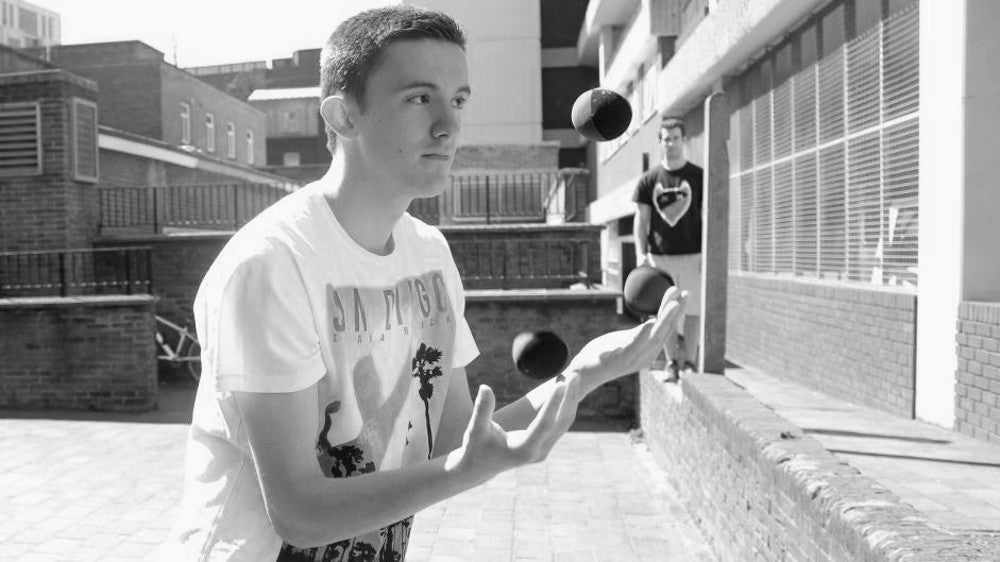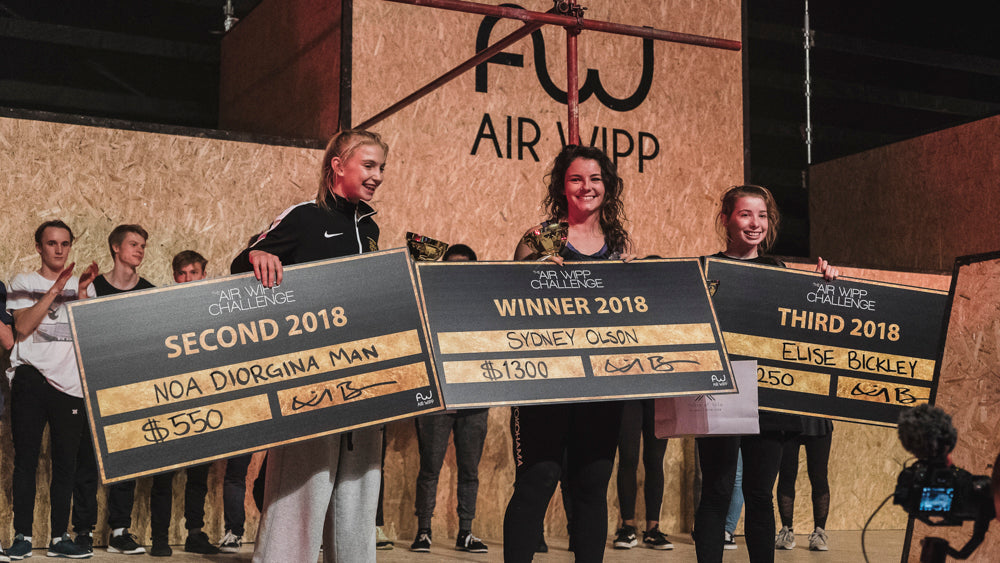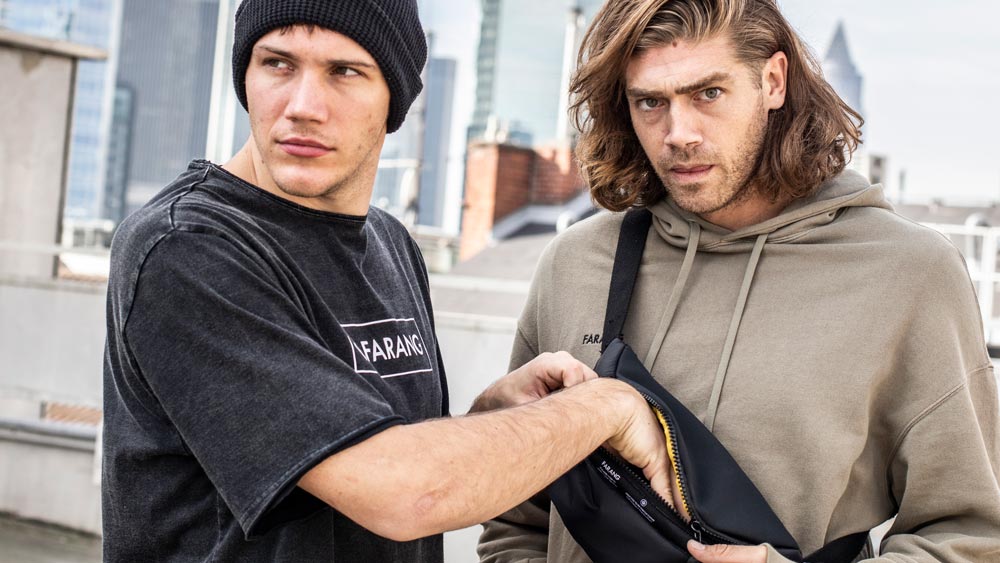The Juggling Connection

I take a look at why so many people in the parkour community love activities like juggling, solving rubik's cubes, slacklining, and all sorts of others. I get a little deeper into it than I expected, and speculate as to what could be connection between all of these.
I’m sure you’ve all noticed it. As a community we’re pretty obsessed with little side-pursuits along with our parkour training - things like juggling, kendama, slacklining, and even solving rubik's cubes. But why is that? Why is it that you’re more likely to see a bunch of kids bottle-flipping at a parkour park than at the local skatepark? I’m not sure, but that won’t stop me from indulging in some rampant speculation.
I suppose one of the first things you have to remember when thinking about this sort of thing, is that the parkour community is still relatively small and interconnected. As such, things tend to spread rapidly. It takes just a few individuals with a bit of influence to set a new ball rolling, so to speak.
A past example of this would be when Storror started playing around with kendamas in a few of their episodes (basically a 21st century version of a ball and cup toy). This was way back around 2011. The following summer everyone and their dog seemed to have one! I remember going to WPF camp in Switzerland that year, and more kendamas were floating around than people knew what to do with. People were getting good at it too - clearly spending hours on getting better.
Perhaps a more recent example would be bottle flipping. Of course bottle flipping has been a popular jam-training alternative since the dawn of time, but it underwent a bit of a resurgence about a year ago. It got to the point where Tempest Southbay banned bottle flipping in their gym!
It doesn’t take much to set off a wave of interest in something so seemingly random - we have to bear that in mind. Perhaps a lot of these things are just random cultural quirks we’ve picked up? Thanks to the interests and imaginations of the various individuals who make up the community? Definitely some of that, but I also think there's more to it than that.
I suppose one of the important things to notice about all these little ‘secondary-pursuits’ for lack of a better phrase, is that they’re all coordination based on some level. Juggling and kendama are all about hand-eye coordination, slacklining is an act of entire body coordination, although particularly the lower body. Of course the increasingly popular bouldering and buildering fall into the same category. Rubik's cube solving is the closest thing to an exception to that pattern, although once you get your head around how to do it and start going for time then it is also very much about hand-eye coordination.
It’s not like you show up at a jam and people are sat around playing Chess, doing Sudoku puzzles, or playing Connect 4. That’s why I think the coordination element of it is key. Of course that ties in to why people tend to train parkour in the first place.
There are several different, but interconnected layers to parkour training. In many ways the art of good parkour is bringing together the right technique at the right time to achieve rapid or interesting movement through a space. But having specific techniques dialed, and being able to link them all together are pretty different skills.
You’ve got a near endless supply of separate techniques to learn; vaults, climb-ups, precisions, flips, etc. You could drill just one technique over and over until you were the best in the world at doing that one thing, but that wouldn’t make you ‘good’ at parkour or freerunning. But of course there’s no set amount of techniques you need to know to be ‘good’ either… I think it’s fair to say however that learning new techniques and tricks is a fundamental part of the training process. Learning being the key word.
That’s why learning itself is part of good parkour practice. The better you learn, the better you train, simple. I’ve always noticed that very good parkour athletes tend to be very good learners in general. Each time they learn a new technique they’re going back to square one, and figuring out how to train their brain and body to do this new thing. If go through this process enough times you get better and better at it - you’re gradually learning how to learn better. Meta-learning!

The better you are at meta-learning, the faster you assimilate new techniques, the better you are at parkour, right? I think this nature of the sport leads very naturally to athletes enjoying things like juggling. Juggling is also all about meta-learning, but over a faster time scale. Once you have the coordination down to juggle the regular 3 ball pattern, you quickly move onto different patterns - of which there is also a near endless amount. Each time you learn a new pattern, your brain gets slightly better at figuring out how it’s going to learn the next one. This positive feedback loop can feel really rewarding, and therefore be addictive.
It also tends happen over a shorter time frame than parkour training. You can sometimes master a new juggling pattern in an afternoon, but learning a new flip? In my experience unless you have one of those breakthrough moments, it’s often a couple of days/weeks work to get it dialed down. I think this shorter time scale can often be a refreshing break from the grind of trying to perfect techniques that require entire body coordination. It still feels pretty rewarding too!
Another key layer of parkour training is improving your general awareness - better interpreting your sense data, improving your model of the physics of the outside world so that you can more accurately and efficiently predict how your body will move through it. A lot of us aren’t thinking about it like that consciously, but that’s pretty much what’s happening.
The further you can ‘see ahead into the future’ in an accurate way, the better you can curate your lines. For example; there’s only so much impact the legs can take before they give out on you - it doesn’t matter how good your tech is, there’s just this physiological limit that’s there. So with that in mind, you’re looking at a hefty decent, maybe you can plyo out of that big drop precision? That would be slick and fast. A good traceur knows if they can hit that plyo before they even try, because their sense of the physics of the situation with respect to their body is on point after years of testing random situations just like it. Every jump they’ve ever done has refined their model of the world slightly.
It’s not something you can just ‘study’ though - it’s not like a physicist who had never done a jump in his life could walk up to that same jump and nail it. You have to be able to map that knowledge in real-time onto the very strange object in space that your body is! I think most tracuer’s experience this situational knowledge as a feeling, or an intuition. How many times have you heard ‘yeah, I’m feeling it’ before someone goes for something?

So once you’ve spread your awareness deep into the realms of parkour and freerunning, I think it’s natural to want to expand it further in other directions. Gains are much faster in new domains as well, so it’s always very tempting. Activities like bouldering and slacklining are great opportunities to do so.
You suddenly find your body in physical situations you’re not as accustomed too, and the intuitions you carry over from the world of parkour don’t always work. Some of them do, and some don’t. The mystery of that can be really interesting and even exciting! It’s a chance to enhance that inner picture of the world, generalise it, and make it more robust. Perhaps after so many encounters with the counterintuitive, you’ll even bring something back to your parkour training that you never even expected.

But all that doesn’t fully answer the original question about why you’re more likely to see all these antics at the parkour park rather than the skatepark. Surely all that I’ve spoken about applies to skateboarding and BMX just as much as it does parkour and freerunning? I’d say it does, so there must be something else pushing our community in that direction.
It’s a difficult one. It may come back to the subject I wrote about a few weeks back now - Personality Types in Parkour - Why So Many ENFP's?
Basically the parkour community seems to be on average higher in a psychological trait called ‘openness’. Openness is an indicator of someone's interest in abstract ideas and concepts, openness to experience, and creativity. We’re a community of people who are in general more willing to give new things a go than average. That could play a roll, but who’s to say the skate communities aren’t high in openness too?

Perhaps it’s something to do with the fact parkour doesn’t have any props? At least not in the same way BMX and skateboarding does. In skateboarding there’s you, the environment, and your board. Your board is the prop through which you experience the sport, and the emphasis is not just on exploring how that board interacts with the environment, but how you interact with the board as well. Not forgetting of course how you interact with the environment too. That trinity of relationships is a lot to be preoccupied with. Innovation has plenty of different ways to manifest itself.
But you look at parkour and freerunning, and there is just that one relationship - you and the environment. Tracuers are limited to exploring and innovating within this singular domain. So perhaps exploration of ‘props’ like juggling balls and kendamas is far more enticing to freerunners because it’s a lot more novel?
Skateboarders are used to building a deep relationship with an object already, so the thought of picking up a set of juggling balls or a rubik's cube perhaps doesn’t offer the same amount of new possibilities?
So to sum up, I think a couple of different factors come together to make all those random side activities so popular...
- They tend to be coordination based, which means there’s some directly transferable benefits.
- The community is made up of people who love to explore and are highly open to experiencing new things.
- They allow one to explore the concept of learning itself in a faster context, which can help your parkour as meta-learning is a huge part of the sport.
- Because of the novelty of exploring ‘props’ and objects as opposed to just the environment.
- Through random chance - because we're a small community trends spread quickly.
But as I said, I really don’t know. I find it really fascinating though, and as a bunch of high openness people I’m sure many of you do to.



